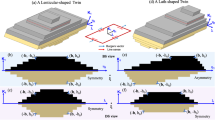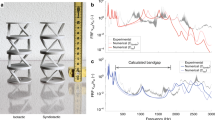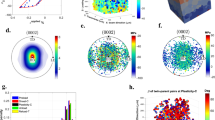Abstract
IN the Dauphine twins of quartz, the polarity of the electric axes is reversed on either side of a twin boundary. Structurally the change is slight. It has been known for some time that electrical twinning could be induced either by heating1 or by pressure2; but up to the present its elimination has not, so far as we are aware, been reported.
This is a preview of subscription content, access via your institution
Access options
Subscribe to this journal
Receive 51 print issues and online access
$199.00 per year
only $3.90 per issue
Buy this article
- Purchase on Springer Link
- Instant access to full article PDF
Prices may be subject to local taxes which are calculated during checkout
Similar content being viewed by others
References
Zinserling, E. V., and Laemmlein, G. G., C.R. Acad. Sci. U.S.S.R., 33, 419 (1941).
Schubnikov, A., and Zinserling, E. V., Z. Kryst., 83, 243 (1932).
Zinserling, E. V., Collected works, Institute of Crystallography., Moscow, 2 (1940).
Author information
Authors and Affiliations
Rights and permissions
About this article
Cite this article
WOOSTER, W., WOOSTER, N. Control of Electrical Twinning in Quartz. Nature 157, 405–406 (1946). https://doi.org/10.1038/157405c0
Issue Date:
DOI: https://doi.org/10.1038/157405c0
This article is cited by
-
Dauphiné twinning and texture memory in polycrystalline quartz. Part 1: Experimental deformation of novaculite
Physics and Chemistry of Minerals (2006)
-
A Theory of the Control of Twinning in Quartz
Nature (1947)
Comments
By submitting a comment you agree to abide by our Terms and Community Guidelines. If you find something abusive or that does not comply with our terms or guidelines please flag it as inappropriate.



